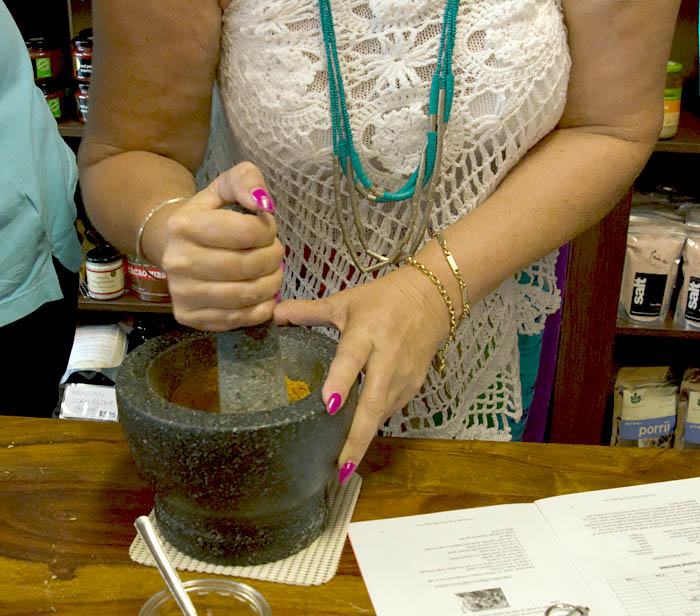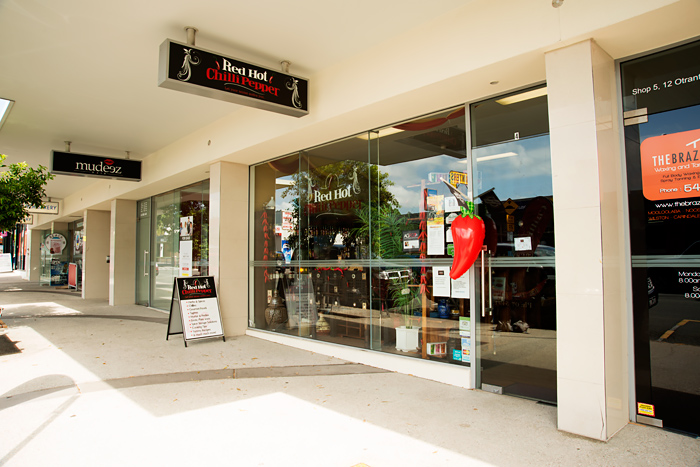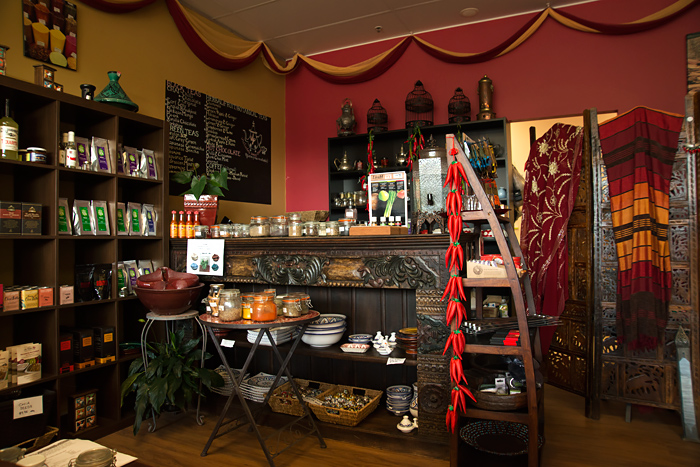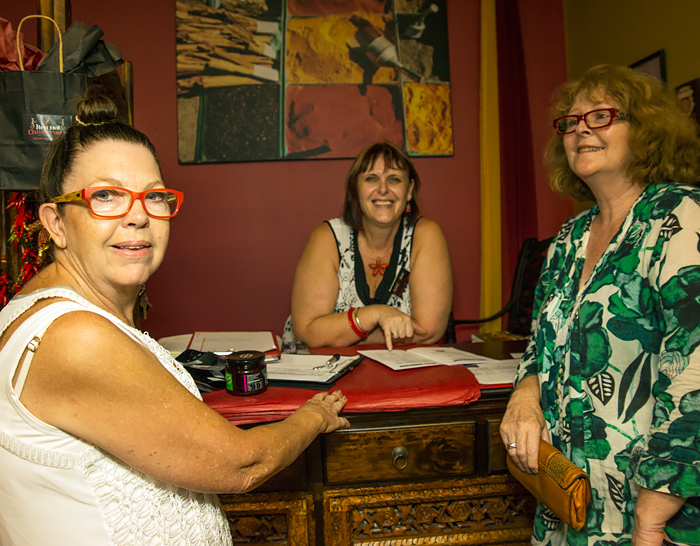Like you, I know that a few spices and herbs will lift a dish from ordinary to spectacular but what I didn’t know was how to blend my own spices. In spice shops around the world we see traditional blends and I always wonder how they knew how much of each type of spice to add to get the blend to impart just the right flavour.
Last Saturday I took a spice blending master class from Vicki Taylor, owner of Red Hot Chilli Pepper in Caloundra. Vicki’s spice shop is fairly new because for many years she was an investment banker in New Zealand. When she left that job she decided on a new career and one day when in a spice shop on one of her travels around the world, she knew what that new career would be. Vicki and her shop have won several business awards and she’s highly regarded in the community for her business acumen as well as her knowledge of spices. She’s a clever woman.
She and her husband moved from New Zealand to the Sunshine Coast and then Vicki learned all about spice blending from my hero Ian Hemphill from Herbie’s Spices. I’ve written about Herbie’s before and I knew if Ian had taught Vicki, I was in good hands.
Vicki began the class by telling us that India, Bangladesh and Turkey are the first, second and third top spice producing countries in the world and spices have been used at least since 2600 BC. The Dutch East India Company was the first multinational corporation in the world in 1602.
Spices make our food taste good but they are also used for health reasons. According to Vicki, nigella seeds are the remedy for everything but death. Its healing properties are stronger than turmeric and work as a pain killer, anti-bacterial, anti-inflammatory, anti-fungal and many more. To get the health benefits you can eat the seeds plain or mixed with honey. You can also boil them in water, strain and drink or heat them in milk. It’s also advisable to mix them into spice blends and sprinkle on roasted vegetables or on bread and pastries.
She went on to the top ten spices that are used for health, the most expensive spices in the world (saffron and vanilla) before explaining the difference between spices and herbs. Herbs are the leaf of a culinary plant only. If you use the root, bark, seeds, berries or buds in cooking, then it’s a spice. Garlic is a spice and dill or parsley are herbs.
One thing I did learn was the difference between cassia bark and cinnamon. Cassia bark, also known as bakers cinnamon, is not a true cinnamon and does not have the wonderful health properties of cinnamon. If you buy something labeled cinnamon sticks, you’re getting cassia and if you buy something labeled cinnamon quills, that’s real cinnamon. Ceylon cinnamon is more expensive and is heavily studied for its ability to regulate blood sugar.
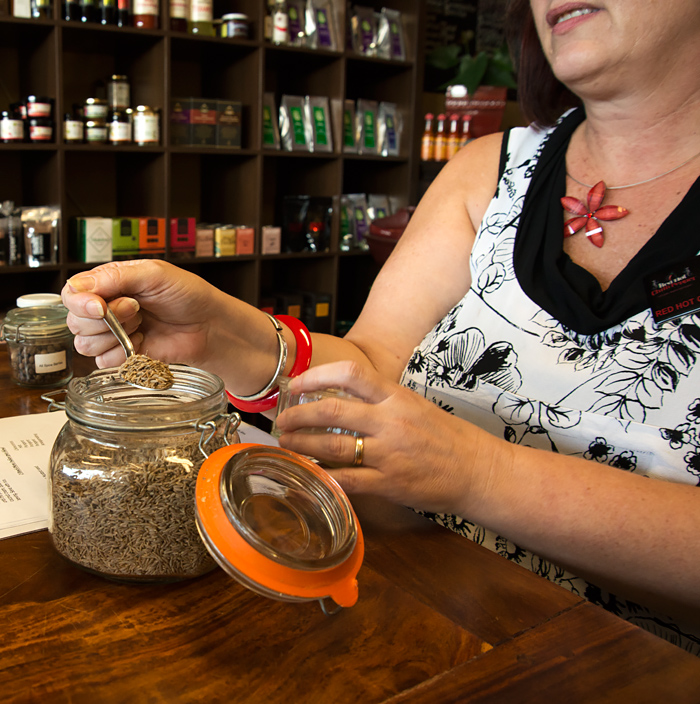
A ground spice or spice blend will last about a year. The spice flavours come from the volatile oils in the spice and after a year, those oils poop out. Using fresh spice means your dish will taste just the way you want. The entire jar might seem expensive but you rarely use more than a little bit to make a big difference in a dish. Whole spices stored in an airtight container away from heat, light and moisture will still be good up to 2 years from purchase.
BLENDING SPICES
Now we get to the good part and the bit I had no clue about – how do they know how much of each spice to use? There’s a formula based upon the basic properties of the different spices.
Each herb or spice fits into one of five categories.
- Amalgamating – Coriander seeds, Cumin seeds, Fennel seeds, Poppy seeds, Sesame seeds and Turmeric
- Hot – Chilli, Horseradish, Mustard and Pepper
- Pungent – Arjowan seeds, Caraway seeds, Cardamom pods, Cloves, Cumin, Dill, Fenugreek, Garlic, Hing (Asafoetida), Juniper beries, Mace, Nigella seeds, Onion and Star Anise
- Sweet – Allspice, Aniseed, Cassia, Cinnamon, Nutmeg and Vanilla
- Tangy – Amchur, Pomegranate molasses, Suman, Tamarind, Ginger and Galangal
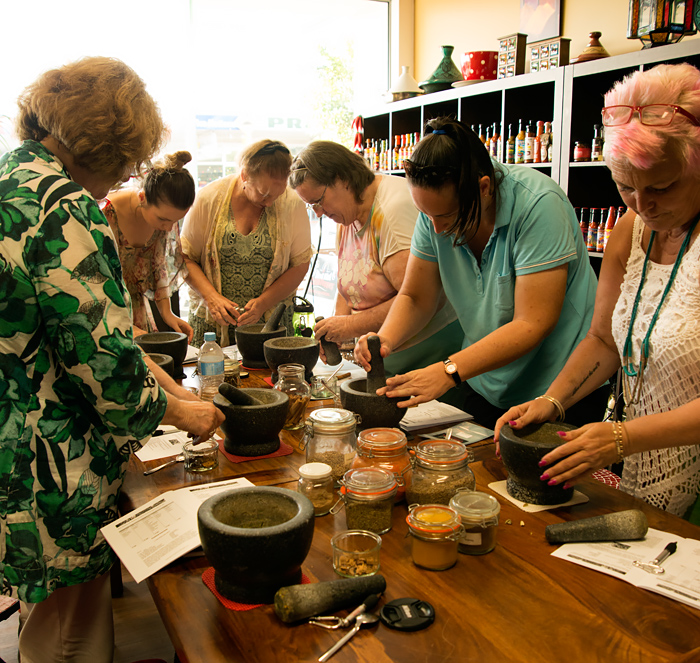
Vicki taught us that each of these categories has a weight in a spice blend. For instance if you use 5 teaspoons of an amalgamating spice – that’s the spice that holds everything together, you’d only use 3/4 of a teaspoon of something from the hot category, 2 teaspoons from the pungent group, 3 from sweet and only 1 from the tangy. Within that, you can use whatever you like. You could use 2 teaspoons of coriander seeds, 1 of fennel, 1 of sesame seeds, 1/2 teaspoon of paprika and 1/2 turmeric and then move to the next category of chilli and choose 3/4 of a teaspoon of that.
My eyes opened so wide when I realised there was a formula and couldn’t wait to get home to make up my own blend.
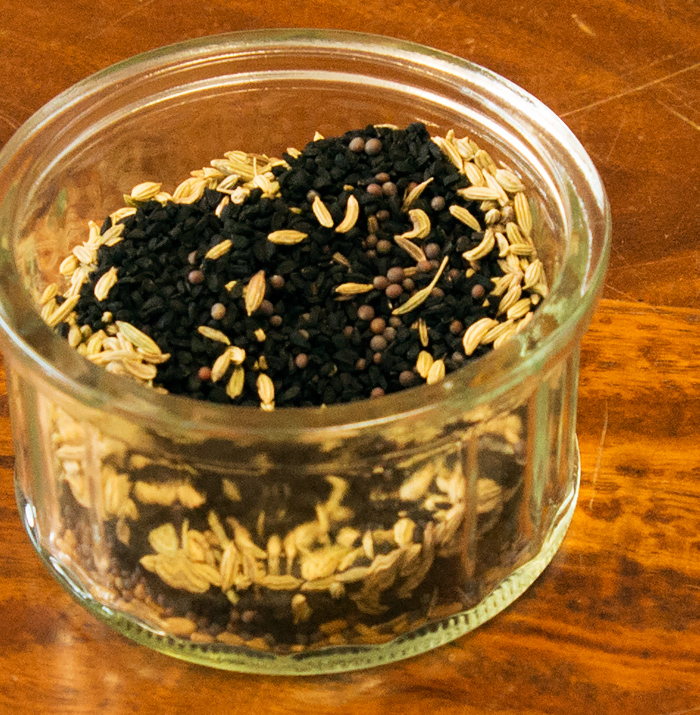
Then it was time to start blending our own spices. We began with Panch Phora, an Indian spice blend and we sampled some potatoes roasted with this spice mix and I fell in love. I don’t know if the nigella seeds cured all that was wrong with me but the taste was fantastic.
When we finished with the Panch Phora it was time to start grinding our Cape Malay spice blend. We did it in two parts to keep all the spices from splashing on to the floor and Vicki kept coming by and saying, “grind more, it needs to be really fine or your curry will be gritty.” It was quite noisy for a while and nearly everyone kept swapping hands with the pestle when one hand got tired. Finally we were done, our spice blends were approved as fine enough and we packaged them up.
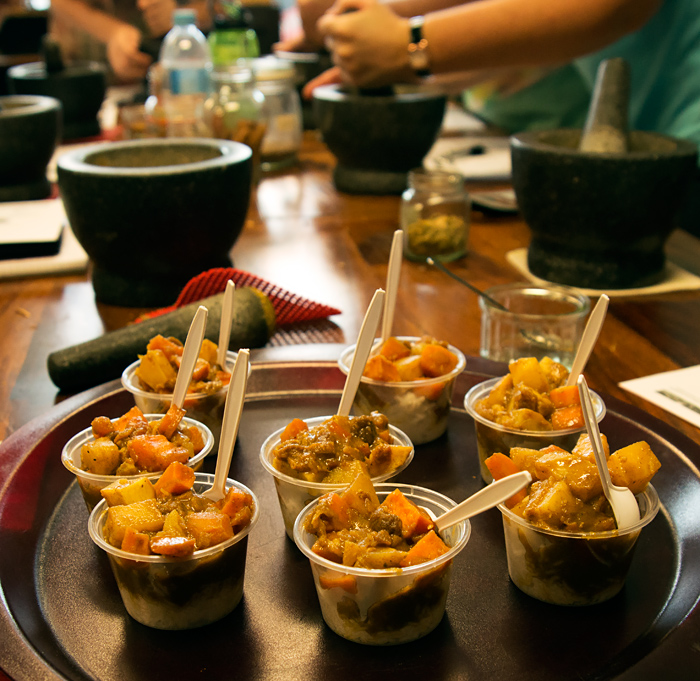
Then Vicki served us a sample of Cape Malay curry which has chicken, onions, tomatoes, garlic, ginger, brown sugar, chicken stock, coconut cream, dried apricots and it was served over rice. I can’t wait to make this at home once the Easter festivities are over.
My thanks to Vicki for a very enjoyable afternoon. I learned so much about spice that will make my food even better in the future. Do you know a lot about spices? I think Vicki should write a book about spice blending. There’s very little out there that is simple to read and to follow. Vicki sells spice grinders, spice drawers, tagines, tea and just about any spice you’re likely to need. I love this shop.
